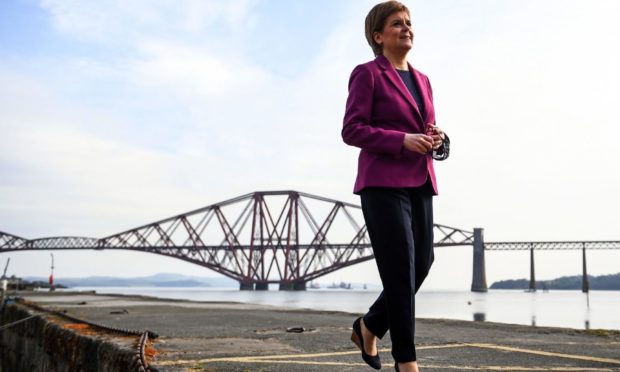Nicola Sturgeon could miss out on winning a majority of seats at Holyrood, while support for independence has also been pegged back, a new poll suggests.
A survey projected 63 MSPs for the ruling party, which is two fewer than Ms Sturgeon needs to govern without relying on other parties to pass budgets and laws.
The Savanta ComRes research would leave the party on the same number as in 2016. But there would still be a pro-independence majority with the Scottish Greens who could return eight MSPs, up two since the last election.
Former first minister Alex Salmond’s ambition to get into Holyrood and secure a “supermajority” could also end in failure. The survey put his Alba Party on one per cent.
What are the results among the parties?
The poll projects that the SNP will return a constituency vote of 46% and a list vote of 38% in the May 6 election.
It predicts that the Scottish Conservatives will achieve 25% of the constituency vote and 23% of the regional list, which would see it return 32 MSPs – one more than in 2016.
Scottish Labour is forecast to return 20% on the constituency and 17% on the list vote and is predicted to return 21 MSPs, three fewer than in 2016.
The Scottish Liberal Democrats are predicted to return five MSPs, the same number as in 2016, with 6% of the constituency and 5% of the list vote.
Independence and the union
The poll of 1,001 Scottish adults also found that support for Scottish independence is split, though support for No has increased since a survey at the start of April.
The latest poll found that 48% would vote No in an independence referendum, while 45% would vote Yes, with the remainder undecided.
When “don’t knows” are excluded, 52% support No and 48% said they would vote Yes.
A survey at the start of April found that if an independence referendum was to be held tomorrow, 45% would vote Yes and the same proportion No, with the remainder undecided.
The latest poll was carried out between April 16 and 20.
